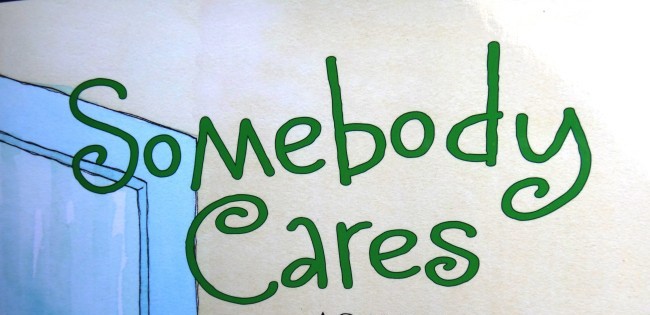 While many children wish they were older when it comes to things like staying up late and watching TV, some children are saddled with adult responsibilities way before their time. The burden of taking care of younger siblings, household tasks and themselves – all without having anyone to turn to for help – can leave children stressed-out, acting out, and full of worry, sadness, anger, loneliness and fear.
While many children wish they were older when it comes to things like staying up late and watching TV, some children are saddled with adult responsibilities way before their time. The burden of taking care of younger siblings, household tasks and themselves – all without having anyone to turn to for help – can leave children stressed-out, acting out, and full of worry, sadness, anger, loneliness and fear.
Clinical psychologist Susan Farber Straus addresses those feelings and more in her latest book “Somebody Cares: A Guide for Kids Who Have Experienced Neglect.” Delightfully illustrated by Claire Keay, the book is directed at children who have been frequently left to fend for themselves in a world that appears unfriendly, unhappy and altogether overwhelming.
How Things Fall Apart
The book begins with a note to the children, first letting them know how brave, strong and clever they’ve been by successfully taking care of all the things that need to be done. It continues by walking the reader through different scenarios in which neglected children may find themselves, from missing homework to acting out at school.
Not only does Farber Straus do a good job of explaining the myriad emotions neglected children may be feeling, but she also outlines what happens to the body when it’s constantly under stress as if it were in danger. The “fight, flight or freeze” response kicks in, which results in a child who is:
- Always ready to fight
- Always ready to run from things
- Constantly freezing in place, blocking out all thoughts and feelings
How Things Get Better
The solution for neglected children often comes in the form of a social worker, who is introduced to the household with the overall goal of helping the family dynamic change. Working with a therapist is also mentioned, with a brief overview of what it’s like for children, along with other helpful suggestions kids can use to restore a sense of safety, security and serenity to their world.
These suggestions include:
- Making a personal safety plan
- Reaching out to grown-ups like teachers, neighbors and grandparents when the child needs help
- Creating a feel-good plan with things children can do when they feel scared, angry or sad
- Joining groups to make new friends
- Engaging in new activities at school
Three particularly effective techniques each get its own page, with instructions on deep breathing, muscle relaxation and an easy imagination-based meditation exercise for children.
Summing it Up
Practical, simple and loaded with illustrations, children may move through the book rather quickly, whether they read it with a trusted adult or on their own. The book closes with a list of benefits that occur when their life changes for the better and they are once again under the care and guidance of a trusted adult. Perhaps the most crucial benefit those children have been missing is the simple pleasure “of just being a kid.”
- Somebody Cares: A Guide for Kids Who Have Experienced Neglect (Magination Press, 2016); By Susan Farber Straus, Phd; Illustrated by Claire Keay
- Ages 6 to 11
- Available through the publisher at APA.org and at Amazon.com





